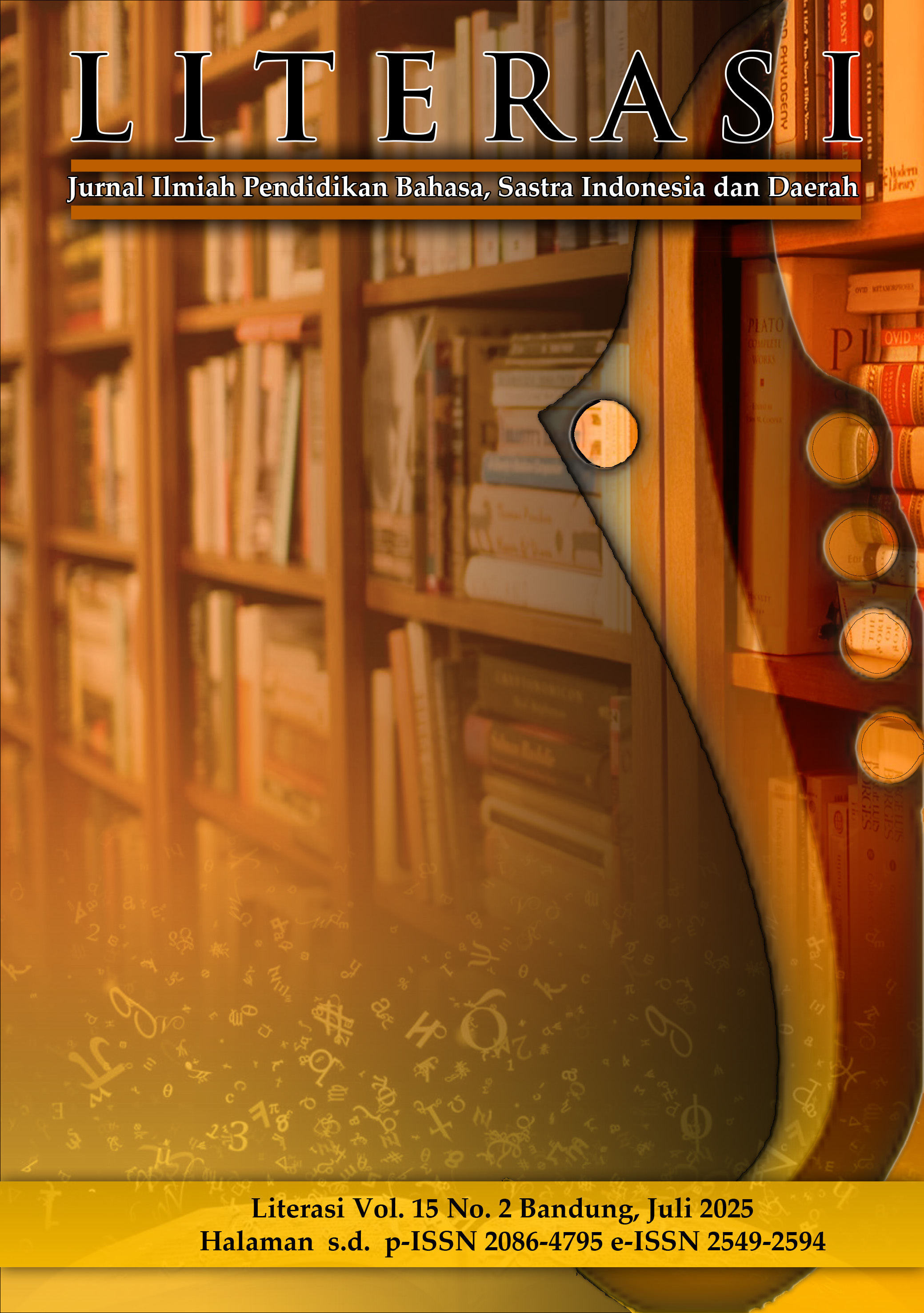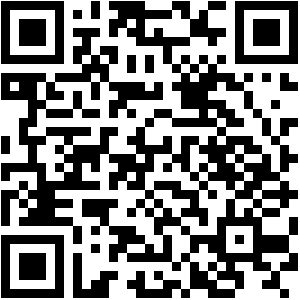DESAIN MODEL KETERAMPILAN BERPIDATO INOVATIF
DOI:
https://doi.org/10.23969/literasi.v15i2.24122Keywords:
keterampilan berpidato, desain model, inovatif, komunikasi lisan, multimodaAbstract
Speech skills are an important part of oral communication skills that are very much needed in the world of education, social, and professional. However, in practice, learning speech skills is still often done conventionally and is less engaging, so it is unable to encourage active participation and build students' self-confidence. This study aims to develop an innovative speech skills model design that can improve students' abilities in composing, delivering, and mastering speeches effectively. The approach used is research and development (R&D), with stages of needs analysis, conceptual model design, expert validation, and offering innovative model designs. This model is designed by integrating a communicative approach, project-based learning, and exploring the use of interactive digital media in the form of videos and other presentation support applications. Interviews involved 609 grade XI students from several high schools in Jakarta. The results of the interviews showed that this model is very much needed and feasible to be implemented. These findings are expected to be an alternative innovative design in learning speaking skills, especially speech, especially in the development of multimodal-based learning.
Downloads
References
Alam, Gilang Nur, Emil Mahyudin, RMT Nurhasan Affandi, Windy Dermawan, and Fuad Azmi, ‘Internasionalisasi Bahasa Indonesia Di Asean: Suatu Upaya Diplomatik Indonesia’, Jurnal Dinamika Global, 7.01 (2022), pp. 25–53, doi:10.36859/jdg.v7i01.1039
Alodan, Hissah A, Anna Liisa Sutt, Rebekah Hill, Joud Alsadhan, and Jane L Cross, ‘Effectiveness, Experience, and Usability of Low-Technology Augmentative and Alternative Communication in Intensive Care: A Mixed-Methods Systematic Review’, Australian Critical Care, 38.1 (2024), p. 101061, doi:10.1016/j.aucc.2024.04.006
Asih, Ria Arista, and Hermiyanti Tri Halisiana, ‘Enhancing Students’ Speaking Skill through a Game-Based Learning Innovation of Family Game Show’, JINoP (Jurnal Inovasi Pembelajaran), 8.1 (2022), doi:10.22219/jinop.v8i1.20400
Baccarani, Claudio, and Angelo Bonfanti, ‘Effective Public Speaking: A Conceptual Framework in the Corporate-Communication Field’, Corporate Communications, 20.3 (2015), pp. 375–90, doi:10.1108/CCIJ-04-2014-0025
Barus, Salsa Lina, ‘Upaya Meningkatkan Kemampuan Berpidato Melalui Penggunaan Media Audio Visual Siswa Kelas Ix Smp Negeri 1 Sttu Julu Tahun Pelajaran 2020/2021’, Jurnal Penelitian, Pendidikan Dan Pengajaran: JPPP, 1.2 (2020), p. 72, doi:10.30596/jppp.v1i2.5364
Bateman, John A, Multimodality and Genre A Foundation for the Systematic Analysis of Multimodal Documents, Palgrave (2019), XI <http://scioteca.caf.com/bitstream/handle/123456789/1091/RED2017-Eng-8ene.pdf?sequence=12&isAllowed=y%0Ahttp://dx.doi.org/10.1016/j.regsciurbeco.2008.06.005%0Ahttps://www.researchgate.net/publication/305320484_SISTEM_PEMBETUNGAN_TERPUSAT_STRATEGI_MELESTARI>
Beebe, Steven A., and Susan J. Beebe, Public Speaking Handbook (Pearson Education, Inc., 2013)
Boud, D., R. Keogh, and D. Walker, Reflection: Turning Experience into Learning (Routledge, 2013) <http://scioteca.caf.com/bitstream/handle/123456789/1091/RED2017-Eng-8ene.pdf?sequence=12&isAllowed=y%0Ahttp://dx.doi.org/10.1016/j.regsciurbeco.2008.06.005%0Ahttps://www.researchgate.net/publication/305320484_SISTEM_PEMBETUNGAN_TERPUSAT_STRATEGI_MELESTARI>
Budiana, Nurchalistiani, ‘Implementasi Strategi Can Do Terhadap Kemampuan Berpidato Mahasiswa PBSI Universitas Muhadi Setiabudi Brebes’, Jurnal Ilmiah Indonesia, 3.2 (2018), pp. 94–106
Budiyanti, ‘Peningkatan Keterampilan Berpidato Melalui Teknik ATM (Amati Tiru Modifikasi) Berbasis Kartu Acak Pada Peserta Didik Kelas IXd SMP Negeri 2 Banyubiru Semester 2 Tahun Pelajaran 2014/2015’, Jurnal Profesi Keguruan, 1.1 (2016), pp. 17–25
Cain, Kate, and Simon Bignell, ‘Reading and Listening Comprehension and Their Relation to Inattention and Hyperactivity’, British Journal of Educational Psychology, 84.1 (2014), pp. 108–24, doi:10.1111/bjep.12009
Cain, Tim, ‘Denial, Opposition, Rejection or Dissent: Why Do Teachers Contest Research Evidence?’, Research Papers in Education, 2016, pp. 1–15
Carol Johnson, ‘Language Learners’ Perceptions of Automatic Speech Recognition as a Writing Tool: A Technology Acceptance Model Analysis’, Angewandte Chemie International Edition, 6(11), 951–952., June, 2021, pp. 2013–15
Chen, Lei, Gary Feng, Chee Wee Leong, Jilliam Joe, Christopher Kitchen, and Chong Min Lee, ‘Designing An Automated Assessment of Public Speaking Skills Using Multimodal Cues’, Journal of Learning Analytics, 3.2 (2016), pp. 261–81, doi:10.18608/jla.2016.32.13
Chen, Lei, Chee Wee Leong, Gary Feng, Chong Min Lee, and Swapna Somasundaran, ‘Utilizing Multimodal Cues to Automatically Evaluate Public Speaking Performance’, International Conference on Affective Computing and Intelligent Interaction, ACII 2015, 2015, pp. 394–400, doi:10.1109/ACII.2015.7344601
Dereza, Nadine, Chapter 1: Why Public Speaking Matters Today Public Speaking in the Twenty-First Century <http://www.cmu.edu/>
Dwyer, Karen Kangas, and Marlina M. Davidson, ‘Is Public Speaking Really More Feared Than Death?’, Communication Research Reports, 29.2 (2012), pp. 99–107, doi:10.1080/08824096.2012.667772
Earp, Jeffrey, GAME MAKING FOR LEARNING: A SYSTEMATIC REVIEW OF THE RESEARCH LITERATURE <http://tinyurl.com/earp-lit-review>
Ebrahimi, Omid V, Ståle Pallesen, Robin M F Kenter, and Tine Nordgreen, ‘Psychological Interventions for the Fear of Public Speaking : A’, 10.March (2019), doi:10.3389/fpsyg.2019.00488
Evans, Micahel, Foreign Language Learning with Digital Technology (Continuum Interantional Publishing Group, 2009)
Fan, Jason, and Xun Yan, ‘Assessing Speaking Proficiency : A Narrative Review of Speaking Assessment Research Within the Argument-Based Validation Framework’, Frontiers in Psychology, 11.February (2020), pp. 1–14, doi:10.3389/fpsyg.2020.00330
Fischer, Helge, Matthias Heinz, Lars Schlenker, and Fabiane Follert, Gamifying Higher Education. Beyond Badges, Points and Leaderboards <http://0cn.de/scholar>
Godwin-Jones, Bob, ‘Emerging Technologies: Speech Technologies for Language Learning’, Language Learning and Technology, 3.2 (2000), pp. 6–9
Goh, Edmund, Marianna Sigala, and Edmund Goh, ‘Integrating Information & Communication Technologies ( ICT ) into Classroom Instruction : Teaching Tips for Hospitality Educators from a Diffusion of Innovation Approach Educators from a Di Ff Usion of Innovation Approach’, Journal of Teaching in Travel & Tourism, 00.00 (2020), pp. 1–10, doi:10.1080/15313220.2020.1740636
Hancock, Adrienne B., Matthew D. Stone, Shelley B. Brundage, and Mark T. Zeigler, ‘Public Speaking Attitudes: Does Curriculum Make a Difference?’, Journal of Voice, 24.3 (2010), pp. 302–7, doi:10.1016/j.jvoice.2008.09.007
Hogan, Kevin, The Secret Language of Business (John Wiley & Sons, 2008)
Huang, Peiwen, and Yaling Hwang, ‘Augmented Reality-Assisted Learning: Enhancing Vocabulary Accquition and Motivation in Elementary English Education’, Availabe at SSRN-5134189 Https://Papers.Ssrn.Com/Sol3/Papers.Cfm?Abstract_id=5134189, 2025, doi:http://dx.doi.org/10.2139/ssrn.5134189
Idris, Wiranto, Syarifuddin Ahmad, Mery Balango, and Universitas Negeri Gorontalo, ‘Developing Students’ Critical Thinking in English Speaking Skill by Using Problem Based Learning Method’, Jurnal Normalita, 9.2 (2021), pp. 279–91
Kahlon, Smiti, Philip Lindner, and Tine Nordgreen, ‘Virtual Reality Exposure Therapy for Adolescents with Fear of Public Speaking: A Non-Randomized Feasibility and Pilot Study’, Child and Adolescent Psychiatry and Mental Health, 13.1 (2019), doi:10.1186/s13034-019-0307-y
Kolb, Alice Y., and David A. Kolb, ‘Experiential Learning Theory: A Dynamic, Holistic Approach to Management Learning, Education and Development’, in Armstrong: Management Learning, Edu. and Develop., 2008, pp. 42–68, doi:10.1002/9781119852865.ch15
Kolb, David A., Richard E. Boyatzis, and Charalampos Mainemelis, ‘Experiential Learning Theory: Previous Research and New Directions’, Perspectives on Thinking, Learning, and Cognitive Styles, 216, 2014, pp. 227–47, doi:10.4324/9781410605986-9
Kramsch, Claire, ‘Language and Culture’, Sociology, 2.2 (1968), pp. 254–55, doi:10.1177/003803856800200229
Lucas, Stephen E., and Paul Stob, The Art of Public Speaking, THIRTEENTH (McGraw Hill Education, 2020)
MacIntyre, Peter, and Tammy Gregersen, ‘Emotions That Facilitate Language Learning: The Positive-Broadening Power of the Imagination’, Studies in Second Language Learning and Teaching, 2.2 (2012), p. 193, doi:10.14746/ssllt.2012.2.2.4
Mailani, Okarisma, Irna Nuraeni, Sarah Agnia Syakila, and Jundi Lazuardi, ‘Bahasa Sebagai Alat Komunikasi Dalam Kehidupan Manusia’, Kampret Journal, 1.1 (2022), pp. 1–10, doi:10.35335/kampret.v1i1.8
Masreng, Robert, ‘Diplomasi Bahasa Menjembatani Keragaman Bahasa Daerah Dan Pengutamaan Bahasa Indonesia’, RETORIKA: Jurnal Ilmu Bahasa, 1.1 (2017), p. 155, doi:10.22225/jr.1.1.21.155-167
Mayer, Richard E, Models for Understanding, Source: Review of Educational Research, 1989, LIX
Morreale, Sherwyn P., and Judy C. Pearson, ‘Why Communication Education Is Important: The Centrality of the Discipline in the 21st Century’, Communication Education, 57.2 (2008), pp. 224–40, doi:10.1080/03634520701861713
Morreale, Sherwyn P., Brian H. Spitzberg, and J. Kevin. Barge, Human Communication : Motivation, Knowledge, and Skills (Wadsworth, 2007)
Muliastuti, L, ‘Penyebaran Bahasa Dan Sastra Indonesia Melalui Pengajaran BIPA Dan Ekspedisi Budaya’, Kongres Bahasa Indonesia, 2018, pp. 2015–19
Murti, Sri, ‘Eksistensi Penggunaan Bahasa Indonesia Di Era Globalisasi’, Parole (Jurnal Pendidikan Bahasa Dan Sastra Indonesia), 1.2 (2015), pp. 177–84
Nuci, Krenare Pireva, Rabail Tahir, Alf Inge Wang, and Ali Shariq Imran, ‘Game-Based Digital Quiz as a Tool for Improving Students’ Engagement and Learning in Online Lectures’, IEEE Access, 9 (2021), pp. 91220–34, doi:10.1109/ACCESS.2021.3088583
Orong, Yohanes, Taufik Dermawan, and Karkono Karkono, ‘Penguatan Bahasa Indonesia Di Kancah Persaingan Global Dan Signifikansinya Bagi Studi Filsafat’, Jurnal Pendidikan Bahasa Dan Sastra, 22.2 (2023), pp. 261–74, doi:10.17509/bs_jpbsp.v22i2.55916
Pearson, Judy C., Jeffrey T. Child, and David H. Kahl, ‘Preparation Meeting Opportunity: How Do College Students Prepare for Public Speeches?’, Communication Quarterly, 54.3 (2006), pp. 351–66, doi:10.1080/01463370600878321
Pearson, Judy C., Jeffrey T. Child, Jody L. Mattern, and David H. Kahl, ‘What Are Students Being Taught about Ethics in Public Speaking Textbooks?’, Communication Quarterly, 54.4 (2006), pp. 507–21, doi:10.1080/01463370601036689
Perdana, Teguh Iman, and Siti Pitrianti, ‘Kemampuan Berbicara Siswa SMK Negeri 1 Kedawung Dengan Menggunakan Model Fasilitator Dan Penjelas’, Jurnal Literasi, 6.April 2022 (2022), pp. 78–85
Pusparini, Diah Anita, and Ninik Suryatiningsih, ‘Exploring Students’ Public Speaking Skills Through Business Meeting Simulation’, Journal of English Teaching, Applied Linguistics and Literatures (JETALL), 6.2 (2023), p. 183, doi:10.20527/jetall.v6i2.17050
Rambu, Christian Gordon, ‘Penggunaan Bahasa Indonesia Dalam Diplomasi Pertahanan Indonesia Terhadap Negara Asean’, Jurnal Pertahanan & Bela Negara, 6.1 (2016), pp. 245–60, doi:10.33172/jpbh.v6i1.303
Santhanasamy, Cassandra, and Melor Md Yunus, ‘A Systematic Review of Flipped Learning Approach in Improving Speaking Skills’, European Journal of Educational Research, 11.1 (2022), pp. 127–39
Sarah Robiatul Adawiyah, Dudang Abdul Karim, and Susi Fitria, ‘Peran Dan Fungsi Bahasa Sebagai Komponen Utama Dalam Komunikasi Bisnis’, Jurnal Pendidikan Islam Dan Manajemen Ekonomi, 2.1 (2024), pp. 53–59, doi:10.62495/jpime.v2i1.15
Sebayang, Dea Shintya B, Nuraini Kabeakan, Indah Sari br Tambunan, Nur Febri Aldilla Tambunan, Nurjannah, Srimiati, and others, ‘Analisis Kesalahan Sintaksis Dalam Bahasa Indonesia’, Jurnal Pendidikan Tambusai, 12.2 (2024), pp. 76–85
Siregar, Eveline, Kunto Imbar Nursetyo, and Karina Almira Devitama, ‘PENGEMBANGAN DAN IMPLEMENTASI PANDUAN MENDESAIN PEMBELAJARAN DARING DENGAN PLATFORM SEDERHANA UNTUK GURU-GURU’
Sofiani, Ratna, Siti Rofi’ah, and Lina Putriyanti, ‘Peran Bahasa Indonesia Di Era Globalisasi Saat Ini Untuk Menunjang Prestasi Siswa’, Prosising Sendika, 4.1 (2023), pp. 150–58
Sulistyowati, Titis, ‘Factors Causing English Speaking Anxiety ( ESA ) in EFL Context : A Case Study among Post-Graduate Students in Indonesia’, Applied Research in English Education, 1.1 (2022), pp. 37–47
Tarigan, Saksi, ‘Meningkatkan Keterampilan Berbahasa Indonesia Siswa Melalui Penerapan Model Pembelajaran Berbasis Proyek’, Indonesian Journal of Educational Development, 2.1 (2021), pp. 148–57, doi:10.5281/zenodo.4781878
Ummah, Masfi Sya’fiatul, ‘Kesulitan Belajar Siswa Dalam Pembelajaran Bahasa Indonesia’, Sustainability (Switzerland), 11.1 (2019), pp. 1–14
Wang, Alf Inge, and Rabail Tahir, ‘The Effect of Using Kahoot! For Learning – A Literature Review’, Computers and Education, 149 (2020), doi:10.1016/j.compedu.2020.103818
Wang, Yang, and Ala Mughaid, ‘Design of a Virtual Reality-Based Learning System for Spoken English’, International Journal of Emerging Technologies in Learning, 17.24 (2022), pp. 25–41, doi:10.3991/ijet.v17i24.35655
Wati, Fidia, Fitrah Maya, Sari Hasugian, Ika Febriana, Maya Wulandari, and Sarah Bakara, ‘Peran Bahasa Indonesia Dalam Mendorong Kolaborasi Ekonomi Untuk Pembangunan Berkelanjutan’, JIIC: JURNAL INTELEK INSAN CENDIKIA, 1.8 (2024), pp. 3143–51
Widiana Anggraheni, Famelia, and Meilan Arsanti, ‘Peran Bahasa Indonesia Diera Globalisasi’, Jurnal Sosial Dan Humaniora, 2.1 (2024), pp. 152–54
Downloads
Published
Issue
Section
License
Copyright (c) 2025 Literasi: Jurnal Ilmiah Pendidikan Bahasa, Sastra Indonesia dan Daerah

This work is licensed under a Creative Commons Attribution 4.0 International License.
Hak cipta artikel yang diterbitkan di jurnal ilmiah dimiliki oleh penerbit, bukan penulis. Hal ini berkaitan dengan koordinasi hak akses untuk cetak ulang atau penggunaan lainnya. Dalam hal ini penerbit mempunyai keluluasaan untuk mempublikasikan artikel sesuai dengan kesepakanan Transfer Agreement (penyerahan hak cipta) antara penerbit dengan penulis.















